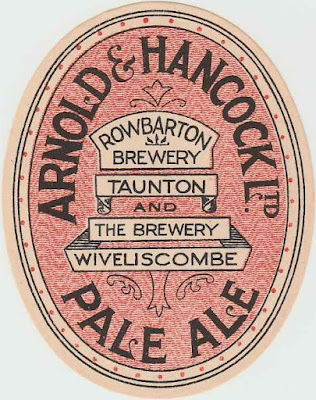Ads not shown when logged in
-
Automated Tracker

 Shut up about Barclay Perkins - Let's Brew - 1897 Hancock XXB
Shut up about Barclay Perkins - Let's Brew - 1897 Hancock XXB
Visit the Shut up about Barclay Perkins site
We’ve now come to Hancock’s Pale Ales. Or at least I think we have. I’m fairly sure that the “B” stands for Bitter. But I’m not totally sure.
The hopping rate per quarter (336 lbs) of malt is slightly lower – 6.3 lbs compared to 7 lbs – than X. If XXB is a Pale Ale, you’d expect it to be the other way around. On the other hand, it is dry hopped and the water treatment, with a large amount of gypsum, is the same as for another Pale Ale, BA. On balance, I’d call this as a Pale Ale.
None of the base malt was from English barley. Just over half was Chilean, the rest Ouchak (spelt Ushak in the brewing record), that is, Middle Eastern. Quite a contrast with X, which was all English. It’s unusual to see all foreign barley. Usually, at least some was English.
It’s rather strange to see No. 3 invert sugar in a Pale Ale. The result is a colour which is pretty dark for a Pale Ale. No. 2 invert is a more normal sugar to see in this type of beer.
A single type of hop – East Kent from the 1896 harvest – was used in the copper. I’m guessing that’s also what was used in the rather heavy dry hopping.
| 1897 Hancock XXB |
| pale malt |
8.25 lb |
84.62% |
| No. 2 invert sugar |
0.75 lb |
7.69% |
| No. 3 invert sugar |
0.75 lb |
7.69% |
| Goldings 120 mins |
1.25 oz |
|
| Goldings 30 mins |
1.00 oz |
|
| Goldings dry hops |
1.00 oz |
|
| OG |
1046 |
|
| FG |
1005.5 |
|
| ABV |
5.36 |
|
| Apparent attenuation |
88.04% |
|
| IBU |
30 |
|
| SRM |
10 |
|
| Mash at |
155º F |
|
| Sparge at |
175º F |
|
| Boil time |
120 minutes |
|
| pitching temp |
58º F |
|
| Yeast |
White Labs WLP099 Super High Gravity |
|
More...
Similar Threads
-
By Blog Tracker in forum Blog Tracker
Replies: 0
Last Post: 04-05-2022, 08:10
-
By Blog Tracker in forum Blog Tracker
Replies: 0
Last Post: 30-04-2022, 09:00
-
By Blog Tracker in forum Blog Tracker
Replies: 0
Last Post: 23-04-2022, 09:33
-
By Blog Tracker in forum Blog Tracker
Replies: 0
Last Post: 16-04-2022, 08:35
-
By Blog Tracker in forum Blog Tracker
Replies: 0
Last Post: 20-02-2019, 07:05
 Posting Permissions
Posting Permissions
- You may not post new threads
- You may not post replies
- You may not post attachments
- You may not edit your posts
-
Forum Rules





 Reply With Quote
Reply With Quote